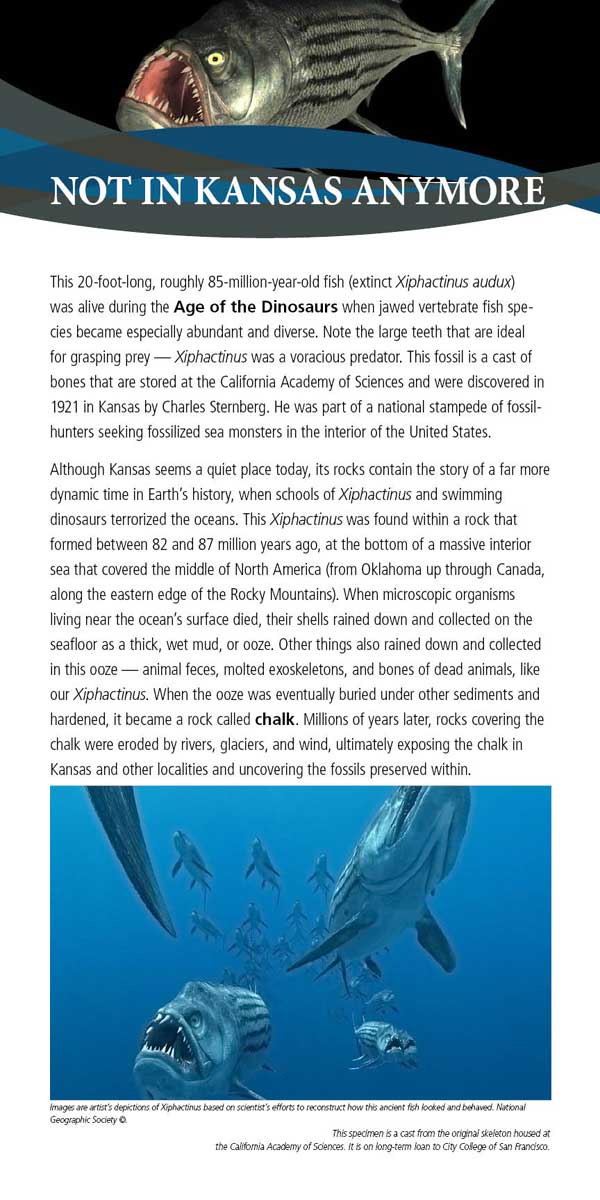LARGE FISH ( Xiphactinus )
The image below is a photo of this exhibit fossil and its pannel.

Approximate dimensions: H:45 ft W:22 ft D:1 ft; This entire piece weights about 1 ton!
This large fish (extinct
Xiphactinus audux
) existed in the Age of the Dinosaurs, during the Cretaceous when jawed vertebrate fish species became especially abundant and diverse. (This particular fossil is likely between 87 and 82 million years old.) It was a large, 4.5 to 5 m (15 to 20 feet) long voracious predatory bony fish that lived in the Western Interior Sea, over what is now the middle of North America, during the Late Cretaceous. When alive, the fish would have resembled a large, fanged tarpon. Note the large teeth which are ideal for grasping prey. At least a dozen specimens have been collected with the remains of large, undigested or partially digested prey in their stomachs. Skeletal remains of
Xiphactinus
have come from Kansas, Alabama, and Georgia; Europe and Australia.
Our
Xiphactinus
was one of three originally donated by Charles H. Sternberg in 1921 to San Diegeo's Natural History Museum (SDNHM). One of the fish fossils is still on display at SDNHM. Another now belongs to the Science Museum of Minnesota, and the third one was purchased sometime in the 1960's by the California Academy of Science's (CAS) director, Dr. George Lindsay. All three were collected by Charles H. Sternberg from the
Niobrara Chalk
as exposed along the Smoky Hill River in Gove and Logan counties, Kansas, USA. The age of this rock (and hence the fossil) is between 87 and 82 million years old.
CCSF's fossil is a cast of the original one that now exists in pieces, in drawers, in the CAS collections. The only parts of the fish that are real are the head, backbone, tail, and bits and pieces of fins and ribs. Our fossil cast is embedded in fiberglass, painted and textured to simulate the look of a rock. The large Swimming Fish came to CCSF from CAS in the summer of 2004, when CAS began demolishing its old museum to make way for a new one. It arrived in 3 pieces and required reassembly, a rigid and very strong support system, and the efforts of a number of individuals to lift, move, and install the fossil. (It weighs well over a ton!)
The correct name is
Xiphactinus audax
. Leidy named it in 1870 based on a fin fragment. When E.D. Cope found a whole fish, he gave it a new name in 1872,
Portheus molossus
. The Leidy name was published first and so has precedence.
Learn more about jawed fish evolution (
Something Fishy
).
Learn more about
Xiphactinus audax
(
http://www.oceansofkansas.com/xiphac.html
).
See National Geographic Society
individual
Xiphactinus audax
photo
and
swimming school photo
.
The image below is a photo of the exhibit panels. Click on it to see a high-definition PDF.
